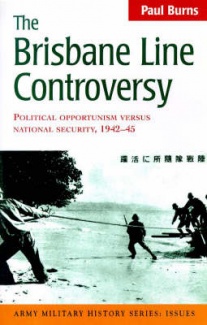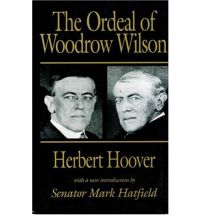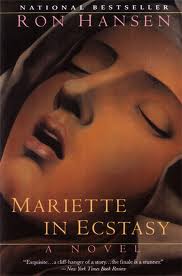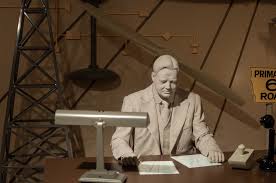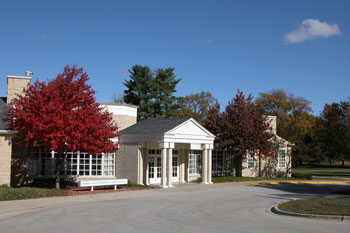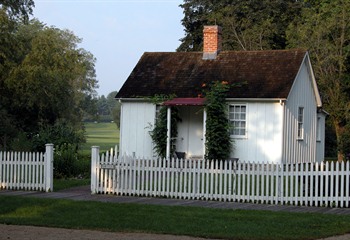I still labour in the land of ‘Ulysses.’ I have listened to Melvyn Bragg’s ‘In Our Time’ episode on ‘Ulysses,’ again, and got some interesting points from it. But what I got most of all was the Solomonic wisdom of Judge John Woolsey’s opinion which is quoted in full below.
Bennet Cerf, when he published the book on the day of this judgement in 1933, included the opinion in every edition, making it the most widely distributed judicial opinion ever. In reading about the case I noticed how reluctant the District Attorney was to bring the action and how the Customs Service ignored the injunction for weeks and weeks. The DA and Customs both seemed to think they had more important things to do.
I could find very little about Judge John Woolsey on the interweb. He was from South Carolina. There is an entry on him in the online History of Federal Judiciary but I could make the link work. The only picture I could find came from the cover of the ‘James Joyce Quarterly.’
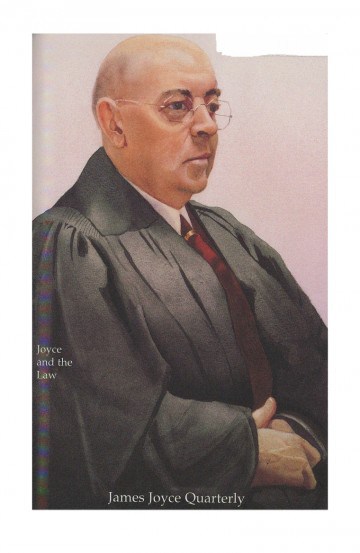
By the way, the District Attorney said he felt the book was a masterpiece of insight. The Customs officials said everyone brought it back from Europe and that it had caused no harm, so what was the fuss? The Appellate Court upheld Woolsey’s decision on the points law.
Banning ‘Ulysses’ – Judge Woolsey’s Decision
Opinion A. 110-59
December 6, 1933
[Edited out the technical matter.]
I have read ‘Ulysses’ once in its entirety and I have read those passages of which the Government particularly complains several times. In fact, for many weeks, my spare time has been devoted to the consideration of the decision which my duty would require me to make in this matter. ‘Ulysses’ is not an easy book to read or to understand. But there has been much written about it, and in order properly to approach the consideration of it it is advisable to read a number of other books which have now become its satellites. The study of ‘Ulysses’ is, therefore, a heavy task.
The reputation of ‘Ulysses’ in the literary world, however, warranted my taking such time as was necessary to enable me to satisfy myself as to the intent with which the book was written, for, of course, in any case where a book is claimed to be obscene it must first be determined, whether the intent with which it was written was what is called, according to the usual phrase, pornographic, — that is, written for the purpose of exploiting obscenity. If the conclusion is that the book is pornographic that is the end of the inquiry and forfeiture must follow.
But in ‘Ulysses,’ in spite of its unusual frankness, I do not detect anywhere the leer of the sensualist. I hold, therefore, that it is not pornographic.
In writing ‘Ulysses,’ Joyce sought to make a serious experiment in a new, if not wholly novel, literary genre. He takes persons of the lower middle class living in Dublin in 1904 and seeks not only to describe what they did on a certain day early in June of that year as they went about the City bent on their usual occupations, but also to tell what many of them thought about the while. Joyce has attempted — it seems to me, with astonishing success — to show how the screen of consciousness with its ever-shifting kaleidoscopic impressions carries, as it were on a plastic palimpsest, not only what is in the focus of each man’s observation of the actual things about him, but also in a penumbral zone residua of past impressions, some recent and some drawn up by association from the domain of the subconscious. He shows how each of these impressions affects the life and behavior of the character which he is describing.
What he seeks to get is not unlike the result of a double or, if that is possible, a multiple exposure on a cinema film which would give a clear foreground with a background visible but somewhat blurred and out of focus in varying degrees.
To convey by words an effect which obviously lends itself more appropriately to a graphic technique, accounts, it seems to me, for much of the obscurity which meets a reader of ‘Ulysses.’ And it also explains another aspect of the book, which I have further to consider, namely, Joyce’s sincerity and his honest effort to show exactly how the minds of his characters operate.
If Joyce did not attempt to be honest in developing the technique which he has adopted in ‘Ulysses’ the result would be psychologically misleading and thus unfaithful to his chosen technique. Such an attitude would be artistically inexcusable.
It is because Joyce has been loyal to his technique and has not funked its necessary implications, but has honestly attempted to tell fully what his characters think about, that he has been the subject of so many attacks and that his purpose has been so often misunderstood and misrepresented. For his attempt sincerely and honestly to realize his objective has required him incidentally to use certain words which are generally considered dirty words and has led at times to what many think is a too poignant pre-occupation with sex in the thoughts of his characters.
The words which are criticized as dirty are old Saxon words known to almost all men and, I venture, to many women, and are such words as would be naturally and habitually used, I believe by the types of folk whose life, physical and mental, Joyce is seeking to describe. In respect of the recurrent emergence of the theme of sex in the minds of his characters, it must always be remembered that his locale was Celtic and his season Spring.
Whether or not one enjoys such a technique as Joyce uses is a matter of taste on which disagreement or argument is futile, but to subject that technique to the standards of some other technique seems to me to be little short of absurd.
Accordingly, I hold that ‘Ulysses’ is a sincere and honest book and I think that the criticisms of it are entirely disposed of by its rationale.
Furthermore, ‘Ulysses’ is an amazing tour de force when one considers the success which has been in the main achieved with such a difficult objective as Joyce set for himself. As I have stated, ‘Ulysses’ is not an easy book to read. It is brilliant and dull, intelligible and obscure by turns. In many places it seems to me to be disgusting, but although it contains, as I have mentioned above, many words usually considered dirty, I have not found anything that I consider to be dirt for dirt’s sake. Each word of the book contributes like a bit of mosaic to the detail of the picture which Joyce is seeking to construct for his readers. If one does not wish to associate with such folk as Joyce describes, that is one’s own choice. In order to avoid indirect contact with them one may not wish to read Ulysses; that is quite understandable. But when such a real artist in words, as Joyce undoubtedly is, seeks to draw a true picture of the lower middle class in a European city, ought it to be impossible for the American public legally to see that picture?
To answer this question it is not sufficient merely to find, as I have found above, that Joyce did not write ‘Ulysses’ with what is commonly called pornographic intent, I must endeavor to apply a more objective standard to his book in order to determine its effect in the result, irrespective of the intent with which it was written.
The statute under which the libel is filed only denounces, in so far as we are here concerned, the importation into the United States from any foreign country of “any obscene book”. Section 305 of the Tariff Act of 1930, Title 19 United States Code, Section 1305. It does not marshal against books the spectrum of condemnatory adjectives found, commonly, in laws dealing with matters of this kind. I am, therefore, only required to determine whether Ulysses is obscene within the legal definition of that word. The meaning of the word “obscene” as legally defined by the Courts is: tending to stir the sex impulses or to lead to sexually impure and lustful thoughts.
Whether a particular book would tend to excite such impulses and thoughts must be tested by the Court’s opinion as to its effect on a person with average sex instincts — what the French would call l’homme moyen sensuel — who plays, in this branch of legal inquiry, the same role of hypothetical reagent as does the “reasonable man” in the law of torts and “the man learned in the art” on questions of invention in patent law.
The risk involved in the use of such a reagent arises from the inherent tendency of the trier of facts, however fair he may intend to be, to make his reagent too much subservient to his own idiosyncrasies. Here, I have attempted to avoid this, if possible, and to make my reagent herein more objective than he might otherwise be, by adopting the following course:
After I had made my decision in regard to the aspect of ‘Ulysses,’ now under consideration, I checked my impressions with two friends of mine who in my opinion answered to the above stated requirement for my reagent.
These literary assessors — as I might properly describe them — were called on separately, and neither knew that I was consulting the other. They are men whose opinion on literature and on life I value most highly. They had both read Ulysses, and, of course, were wholly unconnected with this cause.
Without letting either of my assessors know what my decision was, I gave to each of them the legal definition of obscene and asked each whether in his opinion Ulysses was obscene within that definition.
I was interested to find that they both agreed with my opinion: that reading ‘Ulysses’ in its entirety, as a book must be read on such a test as this, did not tend to excite sexual impulses or lustful thoughts but that its net effect on them was only that of a somewhat tragic and very powerful commentary on the inner lives of men and women.
It is only with the normal person that the law is concerned. Such a test as I have described, therefore, is the only proper test of obscenity in the case of a book like ‘Ulysses’ which is a sincere and serious attempt to devise a new literary method for the observation and description of mankind.
I am quite aware that owing to some of its scenes ‘Ulysses’ is a rather strong draught to ask some sensitive, though normal, persons to take. But my considered opinion, after long reflection, is that whilst in many places the effect of ‘Ulysses’ on the reader undoubtedly is somewhat emetic, nowhere does it tend to be an aphrodisiac.
‘Ulysses’ may, therefore, be admitted into the United States.
JOHN M. WOOLSEY
United States District Judge
December 6, 1933
P.S.
By the way, to me Bennett Cerf was a panelist on ‘What’s My line?’ in the 1950s where he was the life of the party in a dry and droll way. He is second from the left.
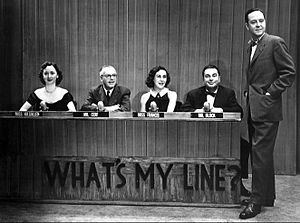
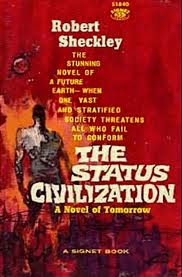

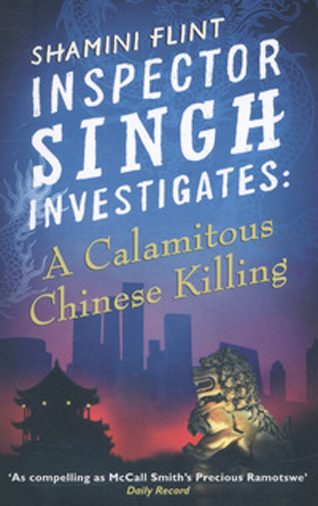


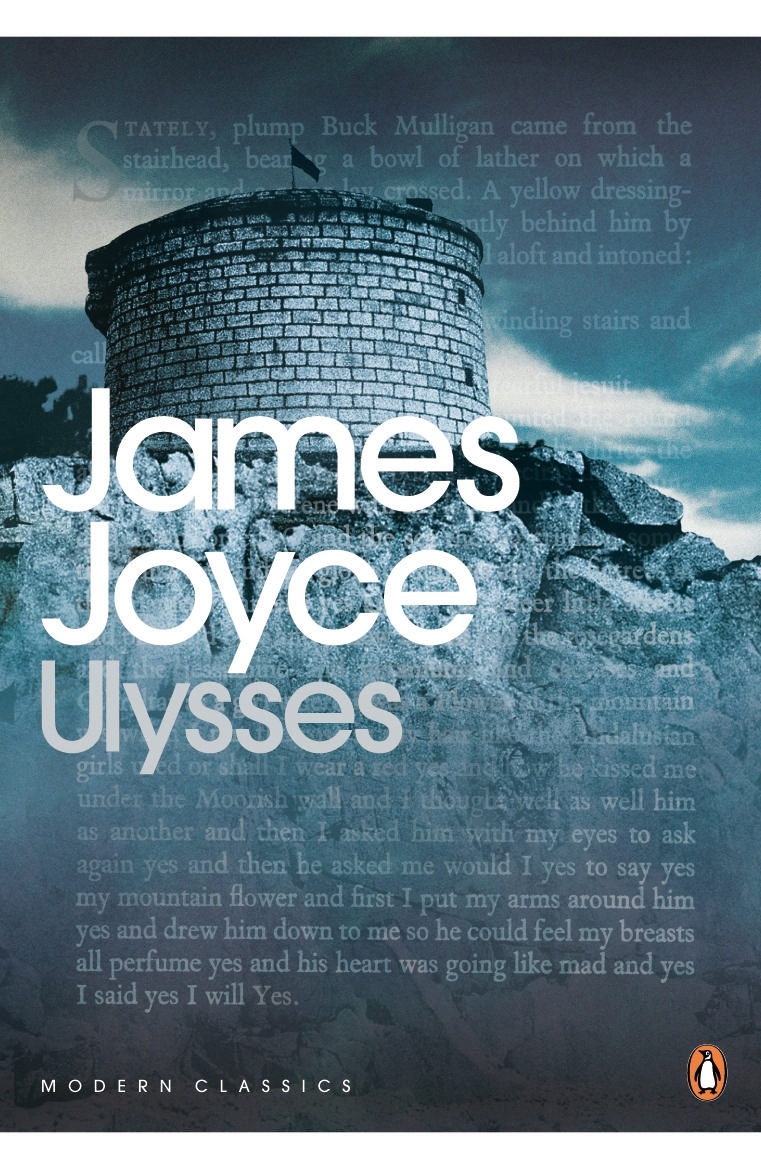
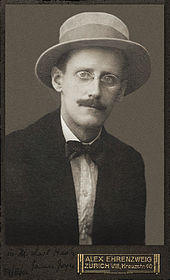 This novel is usually described as modern, as in modernist, and his technique is equally, commonly described as stream of consciousness. I felt ready for both. I have a read a lot of modern novels, and the modernist ones among them were incomprehensible as I comprehended them. Alain Robbe-Grillet, Juan Louis Borges, Samuel Beckett, Luigi Pirandello, Robert Musil, Virginia Wolfe with their discontinuous story lines, the unreliable narrators, multiple points of view, unattributed dialgoue, the elaborate but meaninglessness red herrings, the inwardness, the self-referential, and meandering nothingness. (Starting to sound like a curriculum committee meeting.)
This novel is usually described as modern, as in modernist, and his technique is equally, commonly described as stream of consciousness. I felt ready for both. I have a read a lot of modern novels, and the modernist ones among them were incomprehensible as I comprehended them. Alain Robbe-Grillet, Juan Louis Borges, Samuel Beckett, Luigi Pirandello, Robert Musil, Virginia Wolfe with their discontinuous story lines, the unreliable narrators, multiple points of view, unattributed dialgoue, the elaborate but meaninglessness red herrings, the inwardness, the self-referential, and meandering nothingness. (Starting to sound like a curriculum committee meeting.)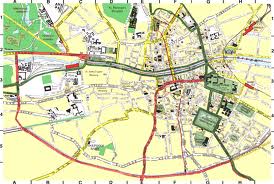 I did get something out of the three weeks I spent with the book, putting aside all other reading to concentrate soley on it, and that is the right to strut on Bloom’s day next. (Joyceans will get it, and the rest will not.) Oh, I also got a strong desire not to read anymore James Joyce. ‘Finnigan’s Wake,’ which I am told is even more modernist than ‘Ulysess’ (which claims without ground an affinity with the eternal story of Homer)! Some people think that is a recommendation but I am not among their number. To me modernist means lack of punctuation, contempt for readers, and self-indulgence.
I did get something out of the three weeks I spent with the book, putting aside all other reading to concentrate soley on it, and that is the right to strut on Bloom’s day next. (Joyceans will get it, and the rest will not.) Oh, I also got a strong desire not to read anymore James Joyce. ‘Finnigan’s Wake,’ which I am told is even more modernist than ‘Ulysess’ (which claims without ground an affinity with the eternal story of Homer)! Some people think that is a recommendation but I am not among their number. To me modernist means lack of punctuation, contempt for readers, and self-indulgence.